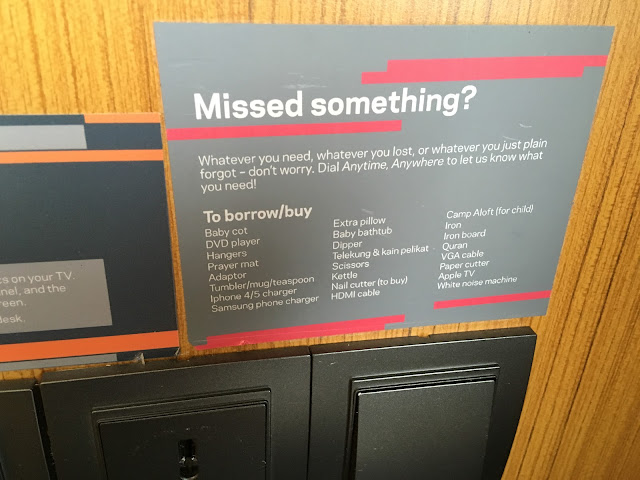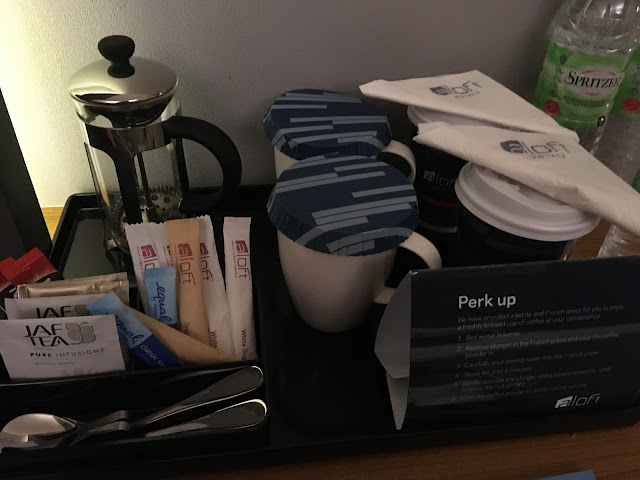 |
| Posing before our practical training in the pool |
Being in the O&G industry, I never dreamed that one day I would be privileged to attend a training for offshore personnels. So it was to my delight that I found myself nominated for BOSEIT training in Miri. For those who are not familiar, BOSEIT is a compulsory training for personnel working offshore. Not that I will be working in offshore platforms anytime soon (and leave my two princesses behind!), but nevertheless it is in preparation should I ever be required to go for a visit etc.
Just a short introduction to BOSEIT training. There a few types of BOSEIT courses and the one that I signed up is Tropical BOSEIT or T-BOSEIT. In my class, there's another student who was taking BOSEIT, of which the difference is those taking BOSEIT will be taught how to survive in below 0 degrees ocean environment and wearing a thermal suit. Other than that, the content of the training is quite similar to T-BOSEIT (where we are taught survival skills in tropical environment).
Before going for this training, I had the impression that it would be a tough experience when it comes to applying the sea survival skills in the swimming pool especially during helicopter crash scenario. The one practical training that everybody seemed to dread of is the simulation of the helicopter turning 180 degrees in the water while you are still on board and strapped to your seat!
Many of my friends shared their experience of being stuck to their seat (unable to remove the seat buckle), or float to the heli's floor (coz the ceiling is now below foot) unable to leave the aircraft and had to be helped by divers on standby. Some got so nervous and knocked their heads on their way out, and many other scary moments when undergoing the training.
Those who are unable to go through this exercise most likely won't be able to pass the course because it's important only those who can demonstrate their ability to escape from a sinking helicopter and save themselves are deemed fit to go to offshore.
The training is offered over a 3-day course. The first day was spent in a classroom environment where we learnt about what are the hazards and risks on an offshore platforms / floaters, theories of sea survival skills, types of signals, etc. The trainer also demonstrated techniques of putting on life jackets - the ordinary life jackets and the one issued if we are flying in a helicopter.
The second day was the most awaited but dreaded part of the training - the practical part. We came early, signed our attendance and then were issued a locker key to put our stuffs, coverall and rubber boots each. After we changed into the given attire, we were given a briefing on what we are expected to do in the pool. Then we put on our life jacket. Our trainer went around explaining what we did wrong and showing the correct way to put and tighten our life jacket (now I know I have been doing it wrong all this while!). Note to all: always make sure the life jacket is really tighten until it's a little bit uncomfortable and the front straps pulled until the jacket front is right below our chin as loose jacket will cause discomfort and even choke us in the water.
So once we have been briefed, one by one we descended into the swimming pool. The first task was to swim on our back across the pool and then get out of the pool. The next task was to jump off the 1m ledge into the pool with our hands over our mouth and nose and ankles crossed. These I did with ease.
The next part was to go into HELP position (heat escape lessening position) which is similar to fetal position. As its name implies, the position will lessen body temperature from dropping and reduce / slow down our body from going into hypothermia. Note to all: there are 6 points on our body where heat can easily escapes - head, neck, chest, armpits, behind our knees and foot soles.
The next practical demo is 'huddling'. This is where two or more people grab on each other to perform a tight circle in order to keep warm. We were also taught how to link arms, connect from small huddling groups to make one big human chain and then human circle, and then how to signal our location by kicking vigorously on water to attract rescuers from above.
Next, we practiced how to tow an unconscious person, how to line up in the water and move (swim backwards) in a team. We then were taught what to do when we reach the lifeboat, how to climb aboard the boat (seriously, the life jacket can be quite heavy and makes it difficult to lift yourself out of the water!). Next, we were asked the 9 procedures once we are on a life boat and some survival skills e.g. how to collect drinking water during dry season.
After that, we were asked to tip ourselves from the boat (similar to jumping of the ledge, only this time sitting on the boat edge and leaning backwards). Just as I thought we were done for the morning session, there was the last part - winching. It is a procedure of being rescued by a helicopter by looping a winch / loop under our armpits and then being lifted up. Again, I find this no big deal and before I knew it, the morning practical session is over. So far, no scary part whatsoever 😂
After break, we continued our pool session with the helicopter crash scenario. The first challenge was to put on the special life jacket, coz it's not as straightforward as putting on the ordinary life jacket! After securing everything, we were showed how to use the breathing apparatus that comes with the jacket. At first I struggled with the unlocking/locking mechanism (to let the air go through and allow us to breathe underwater). But I soon got the hang of it. Then we tried the breathing apparatus under water (with much hesitation on my side coz I was really worried that I will end up swallowing water into my lungs guys!). But when it worked like charm, I lost my anxiety and looked forward to the helicopter practice! Until I learnt that we will also need to hold our breath while escaping during this drill!
Let me tell you what happened next - turned out I was worried over nothing! It was as easy as the first part of the practical that morning. Sure, it was no fun being submerged in the cold water repeatedly, but I found putting on the seat belts in the chopper's seat even more challenging than escaping a submerged chopper (no kidding!). Luckily we were not judged based on how proficient we are at buckling up!
So this was what happened during this exercise. The first round, we 'landed' on upright position on the water surface. As the chopper was slowly filled with water, we were supposed to launch a lifeboat, then calmly release the buckles, and step out of the aircraft. Note: The passenger sitting furthest to the exit door is the first one to leave the aircraft in that order. Once all of us exit the chopper, we were supposed to cut the shorter rope that anchors us to the chopper so that we could move out of harm's way from the chopper's rotor blades which might still be moving. The longer tie is supposed to be left intact unless the chopper is sinking fast. Note: Because the aircraft still has radar signal, we were supposed to anchor on to the chopper for as long as possible to prolong the chance of being located and rescued.
Next, as the chopper sunk, we were told to hold our breath as water reached our chest, and once our heads were fully submerged in the water, then we unbuckled and quickly escaped from the nearest window. We repeated this with the window on for the third round, where we were supposed to push the window out in order to escape. The fourth round, we repeated the drill this time using the breathing apparatus.
The fifth to seventh rounds were slightly challenging. As the chopper sunk, it turned 180 degrees. We were first asked to hold our breath and hold on tight to the window with one hand and another hand on the buckle ready to escape once the chopper stopped moving.
As soon as it stopped turning, I quickly unbuckled and swam to the opposite window (where gravity pulled me). Never had I felt more relieved to reach the water surface as I did during these practices 😆
We then repeated this with a breathing apparatus on this time, and finally apparatus on and window intact. For the final round, we were instructed to pull on a tab to inflate the jacket and then swim to the life boat nearby. And that was it! Nothing so nerve-wracking at all 😉
Yes, it was exhausting but exhilarating at the same time. I was so exhausted and my arms hurt from all the swimming, clinging, pulling myself out of the water and hanging onto a capsized chopper. So much so that I immediately fell asleep after the training.
Finally, on the last day, we had a refresher on first aid basics and demonstrated how to perform CPR. In the afternoon, we put on fire-retardant coverall and learned how to put out fire and escaped from smoke-filled room in a group. Lastly, we had a practice on boat transfer to platform (I was more nervous of doing this as compared to the overturned helicopter exercise!) and then going into a lifeboat to escape a burning platform.
 |
| In the lifeboat before we crash landed on the water |
And that was the end of the BOSEIT training. We got our certificate and could now go to offshore platforms if required (though after hearing that the only mode of transport to go to offshore is via boat since it's cheaper than going by heli, I was glad that I didn't have to visit offshore anytime soon).
Going to T-BOSEIT soon? My tips - just enjoy the experience and not let others' experiences scare you!





















































